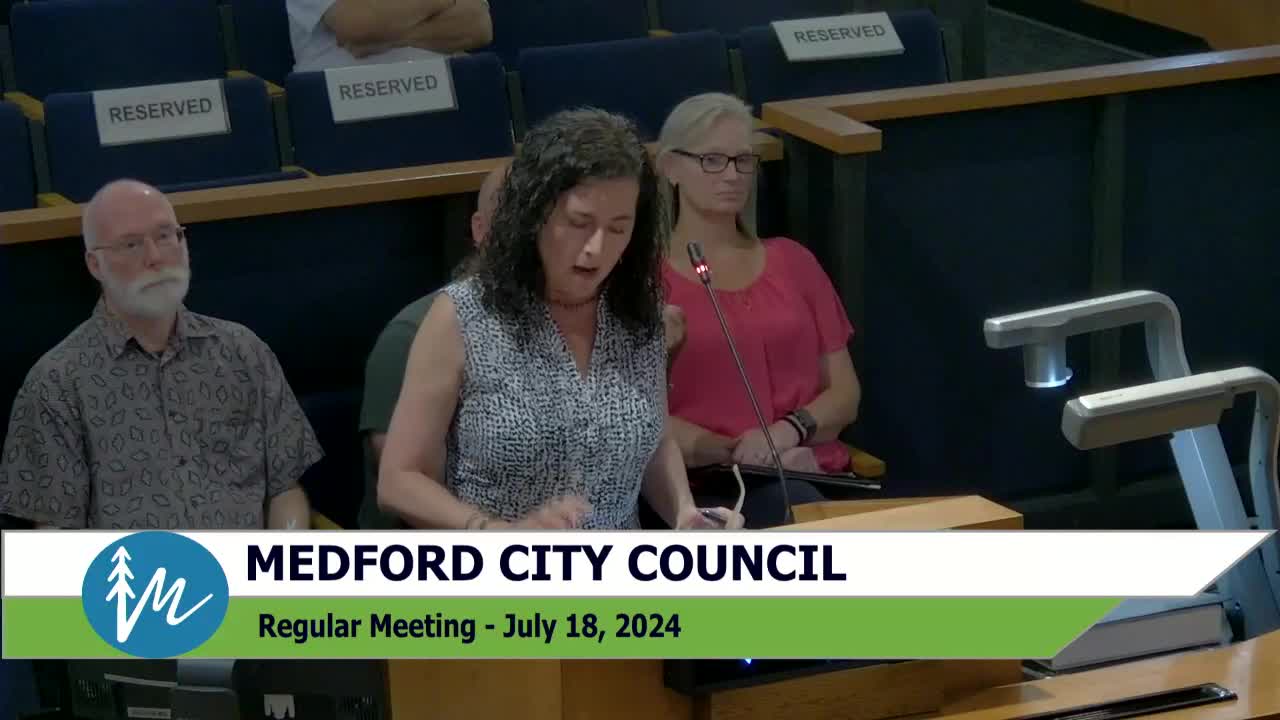Testimony reveals safety debate over controversial street design
July 18, 2024 | Medford, Jackson County, Oregon

This article was created by AI summarizing key points discussed. AI makes mistakes, so for full details and context, please refer to the video of the full meeting. Please report any errors so we can fix them. Report an error »

In a recent government meeting, discussions centered around the safety and compliance of a proposed street development, with conflicting testimonies from appellants and the applicant's representatives. The appellants argued that the street's angle poses a danger, relying solely on visual evidence from a map. In contrast, the applicant presented expert testimony from engineers and public works staff, asserting that the road meets all safety codes, with traffic calming features designed to enhance safety.
The meeting also addressed the Abate property, clarifying that while Habitat for Humanity is required to show a conceptual plan for the street, the Abates are not obligated to build it unless they choose to develop their property. This distinction raised questions about potential illegal exactions if the city were to require Habitat to construct improvements on the Abate property.
Concerns were raised about the perceived incompleteness of the street, with officials noting that incremental property development is common in urban planning. The city cannot mandate developers to acquire rights from neighboring property owners, leading to a patchwork of street improvements across the area.
Additionally, suggestions for future traffic management, such as crosswalks and ADA access, were discussed. While these measures were not part of the current proceedings, officials indicated that the Public Works Department could address neighborhood traffic concerns as they arise.
The Planning Commission's findings were also highlighted, confirming that the proposed development aligns with zoning regulations and the neighborhood circulation plan established decades ago. The meeting concluded with a reaffirmation of the need for compliance with city codes, emphasizing the importance of expert testimony in evaluating safety and development standards.
The meeting also addressed the Abate property, clarifying that while Habitat for Humanity is required to show a conceptual plan for the street, the Abates are not obligated to build it unless they choose to develop their property. This distinction raised questions about potential illegal exactions if the city were to require Habitat to construct improvements on the Abate property.
Concerns were raised about the perceived incompleteness of the street, with officials noting that incremental property development is common in urban planning. The city cannot mandate developers to acquire rights from neighboring property owners, leading to a patchwork of street improvements across the area.
Additionally, suggestions for future traffic management, such as crosswalks and ADA access, were discussed. While these measures were not part of the current proceedings, officials indicated that the Public Works Department could address neighborhood traffic concerns as they arise.
The Planning Commission's findings were also highlighted, confirming that the proposed development aligns with zoning regulations and the neighborhood circulation plan established decades ago. The meeting concluded with a reaffirmation of the need for compliance with city codes, emphasizing the importance of expert testimony in evaluating safety and development standards.
View full meeting
This article is based on a recent meeting—watch the full video and explore the complete transcript for deeper insights into the discussion.
View full meeting
